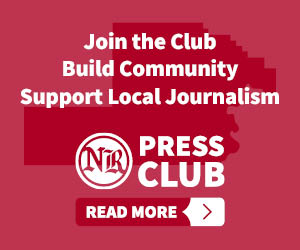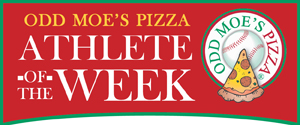Open, top-two primary would be good for what ails Oregon
Advocates of a top-two form of open primary, resembling those long serving to good effect in neighboring California to the south and Washington to the north, are taking a major run at it in the Oregon Legislature this year via House Bill 3166.
And we’d like to make one thing clear at the outset: We favor the bill’s adoption and implementation. The prevailing system is so badly broken, a new approach gives Oregon voters lots to gain and little to lose.
We opposed opening Oregon primaries to unaffiliated voters back in 2000, but growing repudiation of the two major parties, coupled with growing partisanship among each party’s remaining faithful, has irrevocably altered the state’s political calculus over the intervening quarter century.
In 2000, registered Oregon voters split 39% Democratic, 36% Republican, 22% non-affiliated and 3% minor party. Today, they split 36% non-affiliated, 33% Democratic, 24% Republican and 7% minor party.
Put another way, the major party share has declined from 75% to 57% while the non-affiliated and minor party share has risen from 25% to 43%. And that has served to greatly increase the proportion of the electorate effectively disenfranchised under the state’s closed primary system.
The Democratic Party has been in no mood to upset a status quo enabling it maintain a near lock on political power in Oregon so far this century. However, it inadvertently gave the state’s non-affiliated quotient a big boost with its so-called Motor Voter Law, as new young voters registering through the DMV aren’t showing nearly the party allegiance of their parents.
We’re big advocates of boosting voting and other forms of political involvement. It’s the best way to ensure democracy survives in America in future generations.
As former Secretary of State Phil Keisling recently observed, the median age of voters participating in Oregon’s May 2024 primary was 64. That means half were under that age, half over, suggesting we are in desperate need of new blood.
But what good does it do to sign up tens of thousands of new young voters if you are going to turn around and shut them out of the primary elections where the real decisions are often made? In a state marked by one-party domination, and gerrymandering aimed at ensuring it continues, being shut out of the primarily is tantamount to being shut out of the process altogether.
That’s why Keisling is a long-time advocate of open primaries. He understands the problem.
Under House Bill 3166, all candidates would share the same ballot, and it would be open to all voters. The top two vote-getters would advance to the general election, regardless of their political affiliation.
To list a party affiliation on the ballot, candidates would have to secure a formal endorsement. That’s designed to prevent deceptions serving to manipulate outcomes.
Oregon voters rejected open primary measures at the polls in 2008 and 2014.
However, the open primary approach has been adopted in enough states over a long enough period now to have undergone considerable refinement. It no longer takes a leap into the unknown.
In fact, Oregon is one of only 20 states still operating under a traditional closed primary system. The other 30 are all pursuing some form of fully or partially open variation, and the top-two variant has a long track record of its own on the West Coast.
Non-affiliated and minor party voters tend to skip Oregon primaries in droves, and who can blame them? Limited to a handful of often uncontested races — judgeships and the like — what’s the incentive?
The traditional open primary model — where the two major parties still choose their own general election candidates independently, but allow unaffiliated to vote the major party ballot of their choosing — still dominates nationally.
However, that solves only the participation half of the problem. Giving every voter the same ballot, regardless of party affiliation or non-affiliation, addresses the partisanship half of the problem as well.
The challenge candidates face in a closed system is having to tack hard right or hard left to prevail with the party faithful in the primary. That tends to pit a pair of extremists against each other in the general.
Allowing the entire electorate to choose a pair of opposing general election nominees, even if they might sometimes end up being members of the same party, enhances prospects for moderate, centrist candidates commanding broad appeal. We think both our state and our nation would be much the better for it.








Comments
Don Dix
In 2024, Harris won the state by a little over 300K votes (out of 2,191,276 or 56%). Oregon has 36 counties - 9 counties voted for Harris. So one quarter (25%) of Oregon counties controlled the state's overall election (it's been that way for a long time).
Based on the fact the Ds have held power (sometimes a super majority) for decades statewide, what evidence is there to think the Ds are going to go along with this change? The Ds can insure their control with the status quo. They have everything to lose and nothing to gain.
Besides, California has a budget deficit of $68B (Washington deficit is $10B), so something isn't working. Isn't there a better example than either of these states to use as framework to copy?
Bigfootlives
Besides, California has a budget deficit of $68B (Washington deficit is $10B), so something isn't working. Isn't there a better example than either of these states to use as framework to copy?
Not to a bunch of hard left liberals. What they didn’t mention is the name of this fiasco, Ranked Choice Voting. And it’s a cancer.